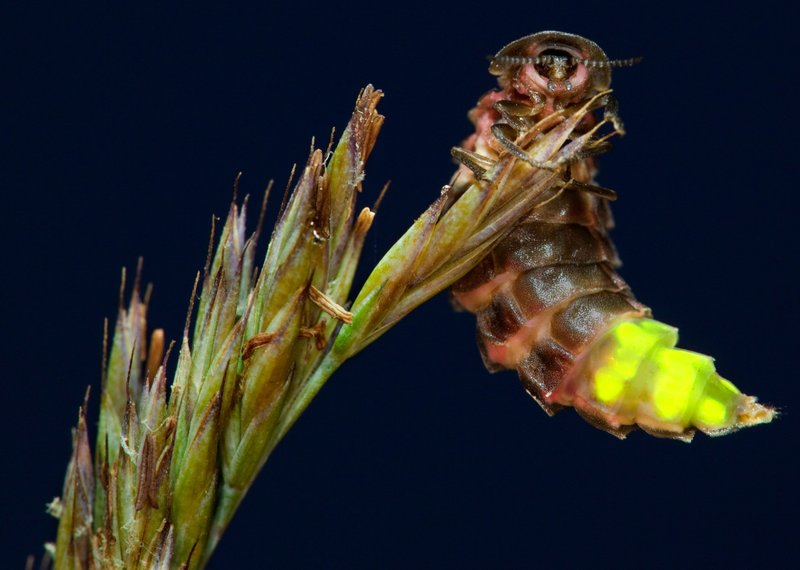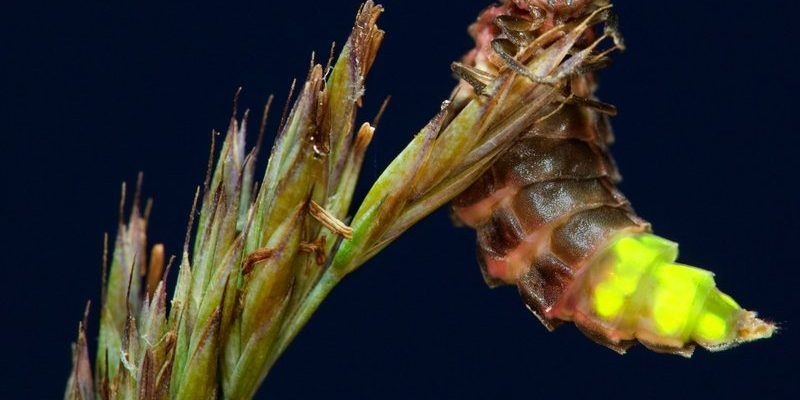
Curious about how glowworms fit into the bigger picture? Well, they don’t just glow for show. Their interactions with other tiny creatures—what we call microfauna—help maintain the environmental health of their habitats. Just like you might notice how different flavors blend in your favorite dish, each microfauna species adds its own touch to the ecosystem. Let’s dive into how these glowworms interact with their fellow microfauna.
The Glowworm’s Role in the Ecosystem
Glowworms, specifically those in the *Lampyridae* family, are primarily known for their bioluminescence. You might think they’re just pretty lights, but they serve several vital purposes. These insects are pivotal in maintaining the food web in their ecosystems.
In their larval stage, glowworms emit light to attract prey, mainly small insects like moths and flies. This bioluminescence isn’t just a light show; it’s a strategic move that helps them thrive. When these insects moths get lured in, the glowworms can feast, ensuring their survival and reproduction. It’s a prime example of how a simple glowing light can have a profound impact.
Beyond their role as predators, glowworms also provide sustenance for other creatures. Birds, small mammals, and even certain reptiles may hunt these light-emitting larvae. So, in a way, glowworms help support various levels of the food chain, contributing to overall biodiversity.
Interactions with Bacteria
Now, let’s delve a bit deeper into the microscopic world around glowworms, particularly their relationship with bacteria. You might not think of bacteria as “friends,” but they play a crucial role in the life cycle of glowworms.
Glowworms rely on certain bacteria to break down organic matter in the soil, creating a nutrient-rich environment. This process is vital because it helps to decompose dead plants and animals, recycling nutrients back into the ecosystem. Without these bacteria, the soil would lack essential minerals, leading to less vegetation growth, which in turn would affect the glowworms and other species that rely on plants for food and habitat.
Interestingly, some studies have shown that glowworms harbor specific bacterial communities in their guts that help them digest their prey. These bacteria act almost like a team, assisting glowworms in extracting nutrients more efficiently. It’s a fantastic example of cooperation between species, showcasing how interdependent life can be.
Impact on Fungi in Damp Environments
Damp, dark environments are the ideal homes for glowworms and also a playground for fungi. These organisms might seem like mere background players, but they form a vital part of the ecosystem. When glowworms inhabit these areas, their presence can influence fungal growth and activity.
Fungi thrive on decomposing organic material, much like bacteria. Glowworms contribute to this process by excreting waste that enriches the soil, creating a more suitable environment for fungi to flourish. In return, fungi can break down materials into simpler forms, making nutrients more accessible for other organisms, including glowworms.
Moreover, the fungi themselves can be food for other microfauna, further linking the various players in this intricate web of life. You might see how something as simple as glowing larvae can indirectly support thriving fungal populations, showcasing the interconnectedness of nature.
Competition with Other Insect Species
Just like any community, glowworms share their habitat with other insects, leading to both competition and collaboration. Glowworms predominantly feast on soft-bodied insects, which means they often compete with other predatory invertebrates.
This competition is a natural part of life in the wild. For instance, spiders and other insectivorous species are on the lookout for the same snacks glowworms are after. However, glowworms have a unique advantage with their bioluminescent lures. This specific trait allows them to attract prey in ways that other predators can’t, giving them an edge.
But here’s the kicker: competition can also lead to fascinating adaptations. When other species are present, glowworms may become more efficient hunters, adjusting their strategies to ensure they get enough food. This dynamic creates a balance in the ecosystem, as every species pushes the others to adapt and thrive in their environments.
Influence on Plant Life
Let’s not forget how glowworms indirectly impact plant life around them. These insects help maintain the health of their environment, leading to richer vegetation. As we touched on earlier, the waste glowworms produce adds vital nutrients back into the ground, influencing plant growth.
Healthy plants, in turn, provide food and shelter not just for glowworms but also for myriad other creatures. Think of them as the foundation of an intricate web of life. If plants thrive, they attract pollinators and herbivores, which support predators like glowworms. It’s a beautiful cycle, illustrating how interconnected every part of the ecosystem is.
You might wonder how all this ties together in a practical sense. Well, preserving habitats for glowworms can lead to healthier plant communities, which benefits the entire ecosystem. So the next time you see that enchanting glow in the forest, remember it’s not just a pretty sight; it’s a signal of a vibrant, interconnected ecosystem.
Challenges and Conservation Efforts
Despite their intriguing interactions and roles, glowworms face several challenges that threaten their populations. Habitat destruction, pollution, and climate change are significant threats to their survival. When the delicate balance of their ecosystems is disrupted, not only do glowworms suffer, but so do countless other species that rely on the same environment.
Conservation efforts are ongoing in various regions to protect these unique insects. Creating protected areas, restoring habitats, and raising awareness about the importance of biodiversity can help safeguard glowworm populations. By fostering environments where glowworms can thrive, we indirectly support many other microfauna and plant species.
If you’re interested in helping, there are simple actions you can take. Planting native species in your garden, reducing pesticide use, and supporting conservation organizations can make a difference. Remember, every tiny effort counts in maintaining the health of our ecosystems.
In closing, glowworms are so much more than beautiful lights in the dark. Their interactions with other microfauna illustrate the complexity and interdependence of life in ecosystems. By understanding their role, we not only gain appreciation for these wondrous creatures but also recognize the importance of protecting the delicate balance of nature. So the next time you catch sight of those glowing little wonders, think about the entire community of life surrounding them and how we can ensure they continue to shine.

